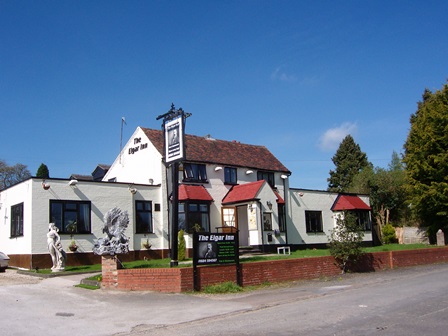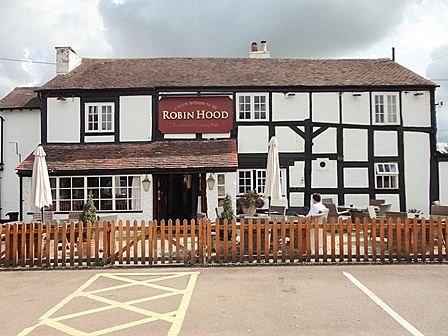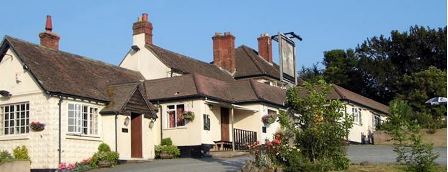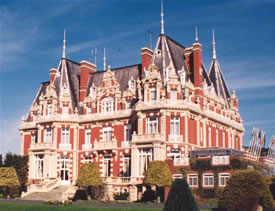Worcestershire Tourist Guide - Articles
Worcester Cathedral
Worcester Cathedral is a magnificent sight as it rises majestically above the River Severn. Worcester has been the seat of a bishopric since the Seventh Century, and the Cathedral was served by monks until the Reformation. St Oswald and St Wulfstan were among the bishops.
Since the Eighteenth Century, the Cathedral has been famous for its part in the annual Three Choirs Festival, the oldest choral festival in existence. Today the Cathedral is the centre of a vibrant community of clergy and laypeople serving the city and diocese of Worcester, and attracting visitors from all over the world.
Worcester Cathedral has been described as possibly the most interesting of all Englandís cathedralís, especially architecturally. It was founded it in 680. Saint Oswald then built another cathedral in 983, and established a monastery attached to it. Saint Wulfstan, who rebuilt the cathedral in 1084, began the present building. During Anglo-Saxon times, Worcester was one of the most important monastic cathedrals in the country. It was a centre of great learning, which continued into the later middle ages, when Worcesterís Benedictine monks went to university to study a variety of subjects, such as theology, medicine, law, history, mathematics, physics, and astronomy. Some of these medieval university textbooks still survive in the cathedral library today.
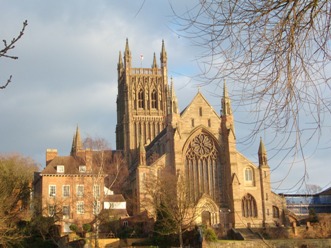
The monastery continued until 1540 when Henry VIII dissolved it, and some of the last monks became the first Dean and Chapter. The cathedral was badly damaged in the civil wars, and as a consequence a major programme of rebuilding was required after the Restoration of Charles II. From the late seventeenth until the nineteenth centuries there were several campaigns to restore parts of the cathedral, but the Victorians from 1864-75 carried out the largest of these
History Time Line
680 Diocese founded, and Bosel consecrated as first bishop. First Cathedral dedicated to St. Peter
983 Oswald founded a Benedictine monastry with a church dedicated to St. Mary which superseded St. Peter's as the Cathedral of Worcester
1062 Wulfstan, Prior of Worcester appointed bishop
1084 Present Cathedral commenced by Bishop Wulfstan, beginning with the crypt
1089 Crypt, and that part of the Cathedral above it, completed
1170 Two Western bays of the nave rebuilt in Transitional Style
1175 Central Tower collapsed
1203 Canonisation of Wulfstan. His shrine became a place of pilgrimage.
1216 King John buried in Cathedral
1218 Restoration of the Cathedral almost complete. Service of Rededication held in presence of Henry III
1224 Construction of the Lady Chapel begun in Early English Style
1317 Rebuilding of the Nave commenced under Bishop Cobham
1374 Present Tower completed
1386 Magnificent north porch built
1502 Prince Arthur was buried in the Cathedral
1540 Monastery dissolved
1640-60 Much of the Cathedral damaged by Parliamentarians
1857 Cathedral restored by the Victorians during the next 20 years
1988 Major restoration launched and is still ongoing.
1992 1000th Anniversary of St. Oswald
2008 1000th Anniversary of St. Wulfstan's birth
Since the Eighteenth Century, the Cathedral has been famous for its part in the annual Three Choirs Festival, the oldest choral festival in existence. Today the Cathedral is the centre of a vibrant community of clergy and laypeople serving the city and diocese of Worcester, and attracting visitors from all over the world.
Worcester Cathedral has been described as possibly the most interesting of all Englandís cathedralís, especially architecturally. It was founded it in 680. Saint Oswald then built another cathedral in 983, and established a monastery attached to it. Saint Wulfstan, who rebuilt the cathedral in 1084, began the present building. During Anglo-Saxon times, Worcester was one of the most important monastic cathedrals in the country. It was a centre of great learning, which continued into the later middle ages, when Worcesterís Benedictine monks went to university to study a variety of subjects, such as theology, medicine, law, history, mathematics, physics, and astronomy. Some of these medieval university textbooks still survive in the cathedral library today.
The monastery continued until 1540 when Henry VIII dissolved it, and some of the last monks became the first Dean and Chapter. The cathedral was badly damaged in the civil wars, and as a consequence a major programme of rebuilding was required after the Restoration of Charles II. From the late seventeenth until the nineteenth centuries there were several campaigns to restore parts of the cathedral, but the Victorians from 1864-75 carried out the largest of these
History Time Line
680 Diocese founded, and Bosel consecrated as first bishop. First Cathedral dedicated to St. Peter
983 Oswald founded a Benedictine monastry with a church dedicated to St. Mary which superseded St. Peter's as the Cathedral of Worcester
1062 Wulfstan, Prior of Worcester appointed bishop
1084 Present Cathedral commenced by Bishop Wulfstan, beginning with the crypt
1089 Crypt, and that part of the Cathedral above it, completed
1170 Two Western bays of the nave rebuilt in Transitional Style
1175 Central Tower collapsed
1203 Canonisation of Wulfstan. His shrine became a place of pilgrimage.
1216 King John buried in Cathedral
1218 Restoration of the Cathedral almost complete. Service of Rededication held in presence of Henry III
1224 Construction of the Lady Chapel begun in Early English Style
1317 Rebuilding of the Nave commenced under Bishop Cobham
1374 Present Tower completed
1386 Magnificent north porch built
1502 Prince Arthur was buried in the Cathedral
1540 Monastery dissolved
1640-60 Much of the Cathedral damaged by Parliamentarians
1857 Cathedral restored by the Victorians during the next 20 years
1988 Major restoration launched and is still ongoing.
1992 1000th Anniversary of St. Oswald
2008 1000th Anniversary of St. Wulfstan's birth










